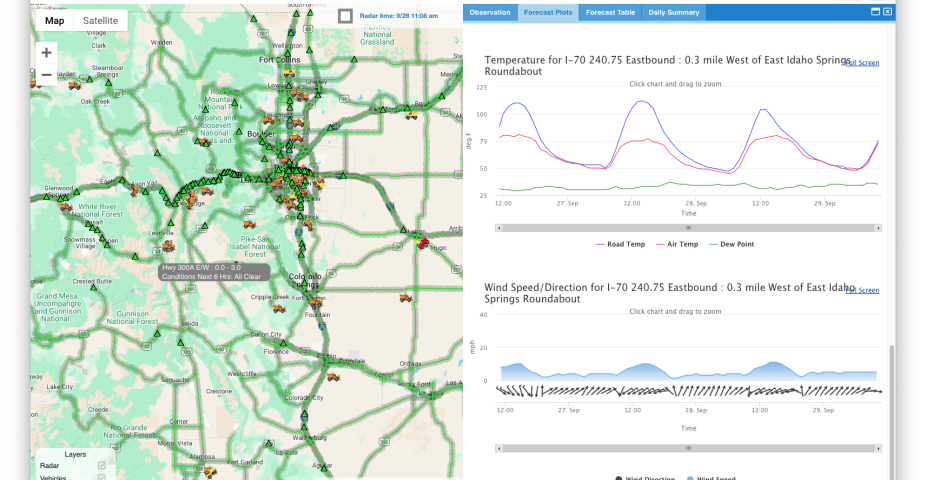Pikalert®

In a typical year, there are 1.2 million weather-related vehicle crashes in the U.S., leading to 445,303 injuries and over 5,897 fatalities. Adverse weather and the associated poor roadway conditions are also responsible for 554 million vehicle-hours of delay per year in the U.S., with associated economic costs reaching into the billions of dollars.
One possible solution for mitigating the adverse impacts of weather on the transportation system is to provide improved road and atmospheric hazard products to road maintenance operators and the traveling public.With funding and support from the U.S. Department of Transportation’s (USDOT) Research and Innovative Technology Administration (RITA) and direction from the Federal Highway Administration’s (FHWA) Road Weather Management Program, the National Center for Atmospheric Research (NCAR) is conducting research to develop the Pikalert® System that incorporates vehicle-based measurements of the road and surrounding atmosphere with other, more traditional weather data sources, and creates road and atmospheric hazard products for a variety of users.
Road Hazard Inference Modules
The use of vehicles to collect weather data offers an opportunity to revolutionize the weather enterprise by significantly increasing the density of weather observations near the surface and providing unique datasets for deriving and inferring road condition information.
The Research Applications Laboratory, with support from the U.S. Department of Transportation’s Federal Highway Administration (FHWA) and Research and Innovative Technology Administration (RITA), is investigating ways of deriving weather and road condition information from vehicle data elements. To this end, efforts are underway to:
- Explore the use vehicles as weather and road condition sensors;
- Investigate methods of combining vehicle data elements and traditional weather data;
- Conduct analysis regarding quantity, quality, and timeliness of data elements;
- Develop a Vehicle Data Translator to ingest, process, and generate derived weather and road condition products for road segments;
- Examine in–vehicle information systems for communicating weather and road hazards
Contact
Please direct questions/comments about this page to:
Amanda Anderson
Associate Scientist IV

